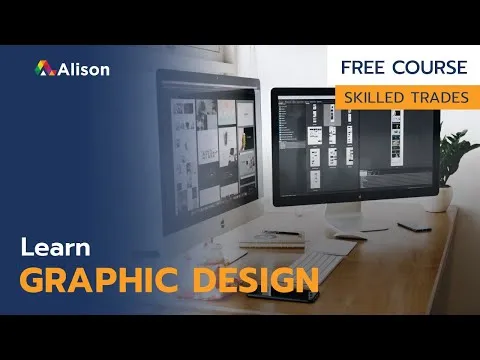
The Practical History of Typography 
The Practical History of Typography is an introduction to The Complete Typographer, exploring the art and science of typography. From display lettering to text typefaces, the course examines typefaces associated with key design and technological developments of the 20th century. Students learn to critically analyze form, and gain insight into advances in generative type and variable fonts for web. According to one student, "This is an fantastic course because you get to know a great deal about typography. As a graphic designer I would recommend it." ▼
ADVERTISEMENT
Course Feature
![]() Cost:
Cost:
Free
![]() Provider:
Provider:
ThaiMOOC
![]() Certificate:
Certificate:
Paid Certification
![]() Language:
Language:
English
![]() Start Date:
Start Date:
On-Demand
Course Overview
❗The content presented here is sourced directly from ThaiMOOC platform. For comprehensive course details, including enrollment information, simply click on the 'Go to class' link on our website.
Updated in [July 03rd, 2023]
The Practical History of Typography is an introductory course to The Complete Typographer. It provides an overview of the art and science of typography, from display lettering to text typefaces. The course covers key design and technological developments of the 20th century, such as the Bauhaus and the New Typography, and examines how they have shaped the evolution of typography. It also looks at more recent advances in generative type and variable fonts for web. Students will gain a greater appreciation of the history of typography and its impact on design. According to one student, "This is an fantastic course because you get to know a great deal about typography. As a graphic designer I would recommend it."
[Application]
Students who have taken The Practical History of Typography can apply their knowledge to their own design projects. They can use the historical context to inform their design decisions, and use the critical analysis skills to evaluate the effectiveness of their designs. Additionally, they can use the course to explore the latest advances in generative type and variable fonts for web, and apply these to their own projects.
[Career Path]
The career path recommended to learners of The Practical History of Typography is a typographer. A typographer is a professional who designs and creates typefaces for various media, such as books, magazines, websites, and other printed materials. They are responsible for selecting the typefaces, font sizes, line spacing, and other elements of typography to create a visually appealing and readable design.
Typographers must have a strong understanding of the history of typography, as well as the latest trends and technologies. They must be able to work with a variety of software programs, such as Adobe InDesign, Photoshop, and Illustrator, to create typefaces and layouts. They must also have a keen eye for detail and be able to work with clients to create a design that meets their needs.
The development trend of typography is moving towards digital media. With the rise of the internet, typographers must be able to create typefaces that are optimized for digital media, such as websites and mobile apps. They must also be able to create typefaces that are responsive to different screen sizes and resolutions. Additionally, typographers must be able to create typefaces that are optimized for search engine optimization (SEO) and accessibility. As technology continues to evolve, typographers must stay up to date with the latest trends and technologies in order to remain competitive.
[Education Path]
The recommended educational path for learners interested in typography is a Bachelor's degree in Graphic Design. This degree program typically includes courses in typography, design principles, digital media, and visual communication. Students will learn the fundamentals of typography, including typeface selection, layout, and design principles. They will also learn how to use digital tools to create and manipulate type, as well as how to create effective visual communication. Additionally, students will gain an understanding of the development trends in typography, such as the use of generative type and variable fonts for web. Upon completion of the degree, students will be prepared to work as graphic designers in a variety of industries.
Course Provider

Provider ThaiMOOC's Stats at AZClass
Discussion and Reviews
0.0 (Based on 0 reviews)
Explore Similar Online Courses

Fundamental Linear Algebra Concepts with Python

How to Make and Sell Your First Immersive Experience

Python for Informatics: Exploring Information

Social Network Analysis

Introduction to Systematic Review and Meta-Analysis

The Analytics Edge

DCO042 - Python For Informatics

Causal Diagrams: Draw Your Assumptions Before Your Conclusions

Whole genome sequencing of bacterial genomes - tools and applications

Complete Graphic Design Course Explaining Psychology (MUST KNOW)

Graphic Design Tutorial For Beginners Graphic Design (Full Course)


Start your review of The Practical History of Typography